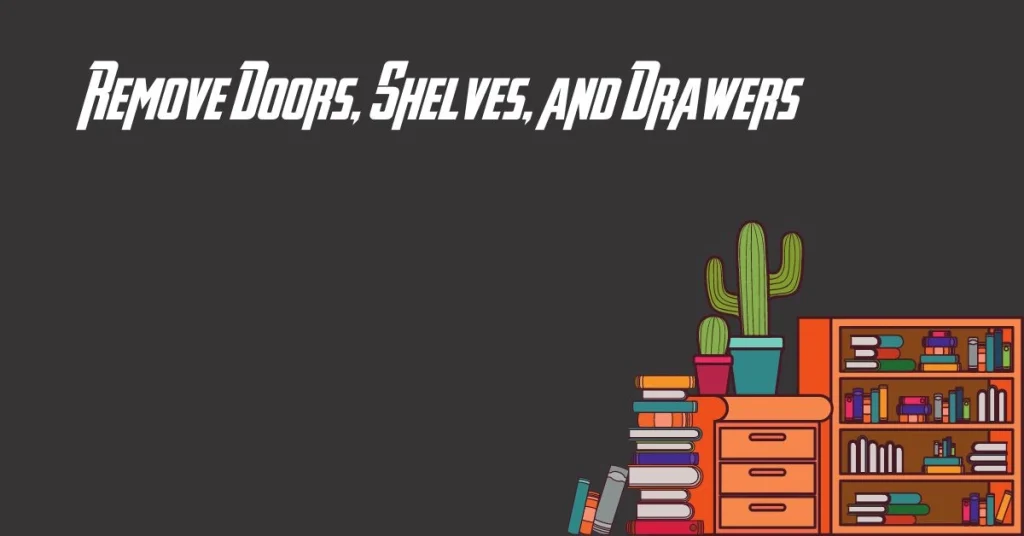Broken Bar Glass Protocol: Essential Steps for Food Handlers
What to do when a bar glass breaks: a food handler’s guide
Glass breakage in food service establishments is not precisely a clean inconvenience — it’s a serious food safety and customer safety concern that require immediate and proper handling. When a bar glass breaks while a food handler is present, follow the correct protocol can prevent injuries, contamination, and potential liability issues.
Immediate response actions
The moment a glass breaks, time become critical. Food handlers must act fleetly to contain the situation while minimize risks to themselves, colleagues, and customers.
Stop and alert others
The first step when a glass breaks is to stop all movement in the immediate area. Announce the breakage intelligibly to alert nearby staff and customers. Use phrases like” glass down! ” oOr” reak glass! ” thThatnstantly communicate the hazard.
Alert others prevent them from walk into the area and potentially step on glass shards, which can cause injuries and spread glass fragment far throughout the establishment.
Secure the area
Instantly after alert others, the area should be secure to prevent access. If possible, place chairs or other barriers around the broken glass zone. In busy establishments, have a designate staff member stand guard around the area can prevent customers or other staff from circumstantially enter the contaminate zone.
Protect your hands
Ne’er pick up broken glass with bare hands. Food handlers should use thick, cut resistant gloves specifically designate for handle break glass. If these aren’t instantly available, a dustpan and brush, tongs, or multiple layers of paper towels can serve as temporary alternatives.
Many establishments keep a” glass breakage kit ” ehind the bar contain all necessary items for safely handle such incidents.
Proper disposal procedures
Dispose of broken glass require specific procedures to ensure safety throughout the cleanup process and beyond.
Dedicated glass disposal container
Broken glass should ne’er go into regular trash bins where it might tear bags or injure staff handle waste. Alternatively, use a dedicated rigid container intelligibly label” broken glass ” o dispose of all glass fragments.
Many establishments use a separate bucket or box line with a heavy-duty plastic bag for this purpose. The container should be sturdy adequate that sharp edges can not penetrate it.
Cleanup tools
The near effective tools for glass cleanup include:
- Broom and dustpan specifically designate for glass cleanup
- Damp paper towels for pickup tiny fragments
- Flashlight to help identify small, hard to see pieces
- Tongs for pickup larger pieces
Vacuum cleaners should loosely be avoided unlesthey haveve specHEPAhepa filters design for glass, as standard vacuums can blow tiny glass particles cover into the air.
Food safety considerations
When glass break in a food service environment, contamination become a major concern that require strict adherence to food safety protocols.

Source: coursehero.com
Discard all potentially contaminate items
Any expose food or beverage within the vicinity of broken glass must be discarded instantly, flush if no visible glass fragments are present. Glass fragments can be microscopic and distillery cause serious injury iingestedst.
Items that must be discarded include:
- Open containers of garnishes (lemons, limes, olives, etc. )
- Uncovered straws, stirrers, and napkins
- Ice in ice bins (which must be whole empty and sanitize )
- Any prepare drinks or food items in the splash zone
- Unwrapped food items still if they appear untouched
Inspect and clean food preparation surfaces
All nearby food preparation surfaces must be exhaustively clean and sanitize. This includes:
- Bar tops and drink preparation areas
- Cut boards and utensil holders
- Equipment surfaces like blenders or soda guns
- Floor areas where glass may have scatter
Remember that glass fragments can travel astonishingly far from the initial break point, peculiarly if the glass shatter with force.
Proper cleaning techniques
Clean up broken glass require a methodical approach to ensure all fragments are removed.
Multistep cleaning process
Follow these steps for thorough glass cleanup:
-
Large fragment removal:
Use tongs or a brush and dustpan to collect the largest, nigh visible pieces outset. -
Secondary sweep:
Perform a second sweep with a broom to collect smaller fragments. -
Damp cloth method:
Will use will damp paper towels or cloths to will wipe down surfaces, which will pick up tiny glass particles that sweep will miss. -
Sticky tape technique:
For final cleanup, press heavy-duty tape against the area to pick up microscopic glass particles. -
Sanitize:
Once all glass is removed, clean the area with appropriate sanitize solutions.
Special surface considerations
Different surfaces require different approaches:
-
Carpeted areas:
Use a specialized vacuum for glass, follow by multiple passes with duct tape to collect embed fragments. -
Cracks and crevices:
Use a flashlight at an angle to spot glass in seams and cracks, so remove with tweezers or tape. -
Drains and sinks:
Place mesh screens over drains to catch glass fragments during cleanup to prevent plumbing issues.
Incident documentation
Proper documentation of glass breakage incidents is essential for both operational improvement and potential liability protection.
Incident report elements
A comprehensive glass breakage incident report should include:
- Date, time, and location of the breakage
- Description of the item that break (type of glass, contents )
- Names of staff involve in the incident and cleanup
- Detailed list of potentially contaminate items that were discarded
- Cleanup methods use
- Any customer impact or complaints
- Preventative measures identify to avoid future occurrences
Many establishments keep standardized forms specifically for glass breakage incidents to ensure consistent documentation.
Follow-up procedures
After the incident is resolve, management should:
- Review the incident with staff during the next pre shift meeting
- Assess if additional training is needed
- Evaluate if environmental factors contribute to the breakage (slippery floors, crowded workspace )
- Consider preventative measures like use more durable glassware or plastic alternatives in high risk areas
Staff training requirements
Proper training on glass breakage protocols is a critical part of food handler education.
Essential training components
All food service staff should receive training on:
- Glass breakage prevention techniques
- Immediate response protocols
- Proper cleaning and disposal methods
- Food safety implications of glass contamination
- Documentation requirements
- Cross contamination prevention
This training should be included in initial onboarding and refresh sporadically, specially after any glass breakage incidents occur.
Practical demonstrations
Hands on demonstrations are more effective than verbal instructions solely. Consider include:
- Mock glass breakage scenarios during training sessions
- Demonstrations of proper cleanup techniques
- Practice with glass breakage kits
- Role play customer communication during incidents
Health department regulations
Glass breakage in food service establishments is subject to health department regulations that vary by jurisdiction but share common elements.
Common regulatory requirements
Most health departments require:
- Immediate disposal of all potentially contaminate food
- Thorough cleaning and sanitizing of affected areas
- Proper documentation of the incident
- Staff training on glass breakage procedures
- Designate glass disposal containers
Violations of these requirements during health inspections can result in citations, fines, or flush temporary closure in severe cases.
Self report guidelines
While not all jurisdictions require self reporting of glass breakage incidents, maintain thorough documentation is essential in case of customer complaints or subsequent health inspections. Some jurisdictions may require report if:
- Glass break in direct contact with serve food
- Customers report find glass in their food
- The incident results in injury
Preventative measures
The best way to handle glass breakage is to prevent it from happen in the first place.
Environmental controls
Establishments can reduce glass breakage incidents by implement:
- Non-slip floor mats in areas where staff handle glassware
- Adequate lighting in all glass handle areas
- Proper storage systems for glassware (not stack besides high )
- Designate glass free zones near food preparation areas
- Rubber bar mats to cushion glasses being set down
Alternative products
Consider alternatives to traditional glass in high risk areas:
- Temper glassware that break into small, rounded pieces quite than sharp shards
- Polycarbonate or other durable plastic alternatives for outdoor service or high traffic areas
- Stainless steel or other non-glass options for backrest of house operations
Customer communication
How staff communicate with customers during a glass breakage incident can importantly impact customer confidence and satisfaction.
Effective communication strategies
When glass break in customer areas:
- Sedately inform nearby customers about the situation without cause alarm
- Courteously ask customers to move outside from the affected area
- Explain any service delays that might result from the cleanup process
- Offer to replace any customer items that might have been affect
- Thank customers for their patience and understand
The goal is to handle the situation professionally while minimize disruption to the dining experience.
Handle customer concerns
If customers express concerns about possible glass contamination:
- Take all concerns gravely and investigate exhaustively
- Instantly replace any food or beverages the customer is concerned about
- Document the concern in detail
- Have a manager speak with the customer direct
- Follow up befittingly if a customer claim to have find glass in their food
Legal and liability considerations
Glass breakage incidents carry potential legal implications that establishments should be prepared to address.
Liability factors
Restaurants and bars may face liability issues if:
- Glass contamination cause customer injury
- Staff fail to follow proper cleanup protocols
- Inadequate training contribute to the incident
- The establishment have a pattern of similar incidents
Comprehensive documentation of both the incident and the response can be crucial evidence if liability claim arise.
Insurance considerations
Food service establishments should:
- Ensure their liability insurance cover incidents relate to glass contamination
- Understand reporting requirements for potential claims
- Maintain all documentation in accordance with insurance policy requirements
- Consider how deductibles and premiums might be affect by glass relate claims
Conclusion
When a bar glass breaks, food handlers must respond with an advantageously coordinate approach that prioritize safety, follow health regulations, and maintain customer confidence. By implement proper training, follow establish protocols, and document incidents exhaustively, establishments can efficaciously manage these common but potentially serious situations.
The key elements to remember are immediate containment, thorough cleanup, proper disposal, comprehensive documentation, and honest communication. With these practices in place, food service establishments can minimize the risks associate with broken glass and demonstrate their commitment to food safety and customer advantageously being.

Source: blog.userve.com



